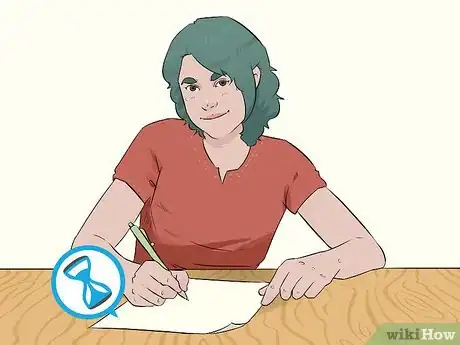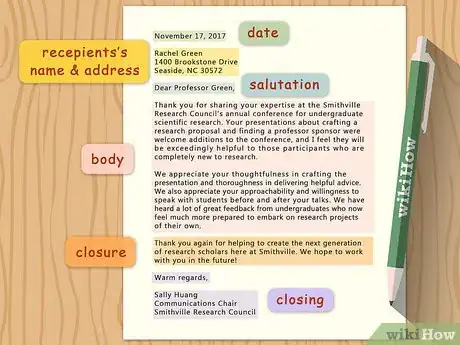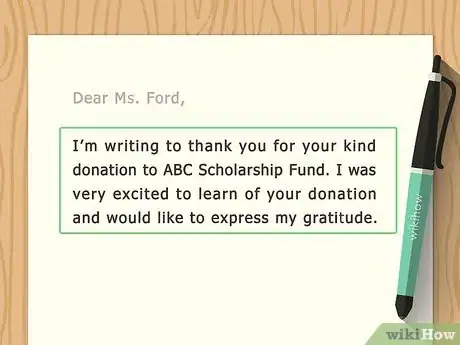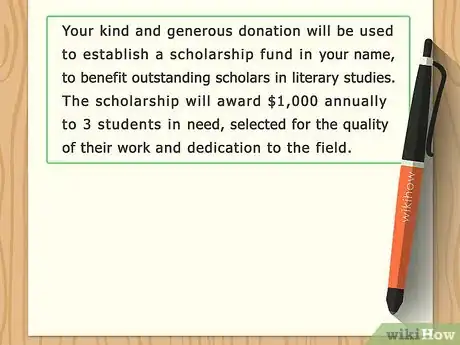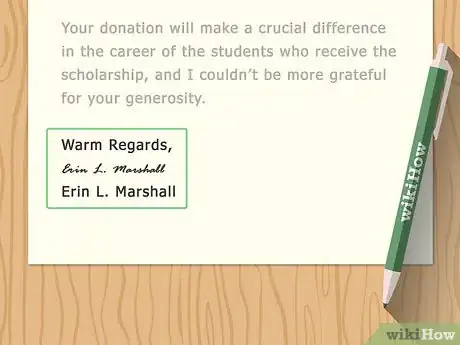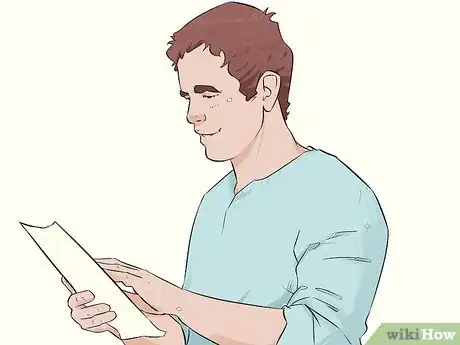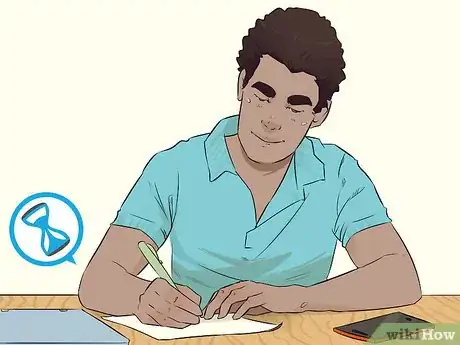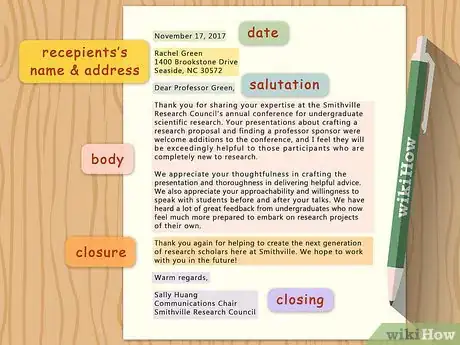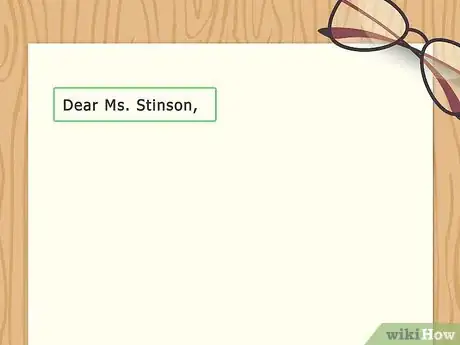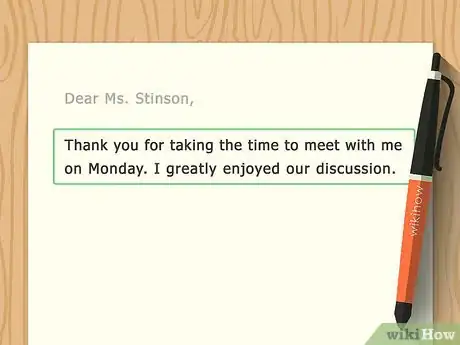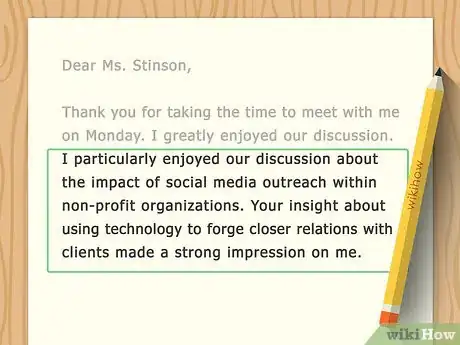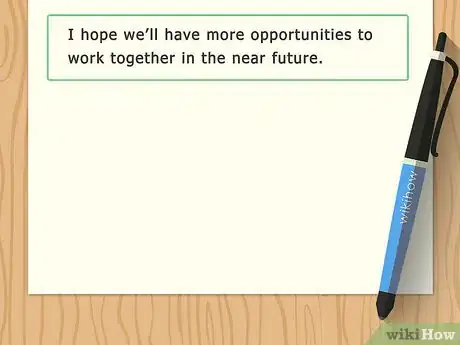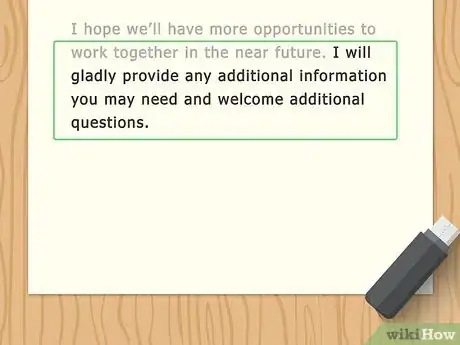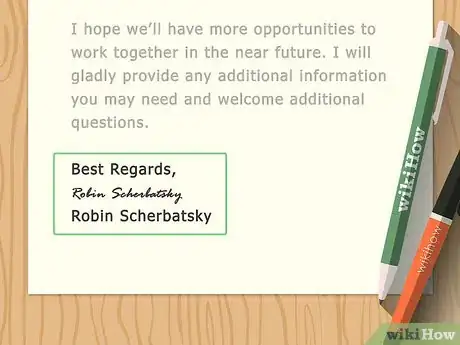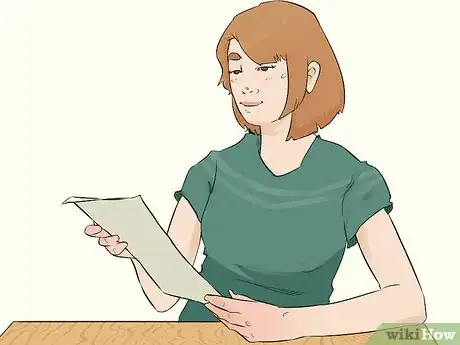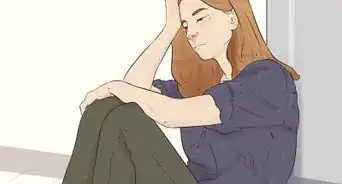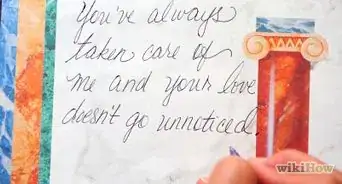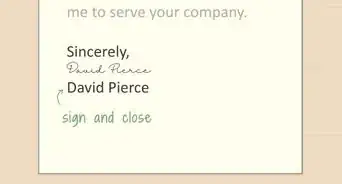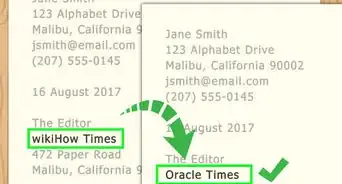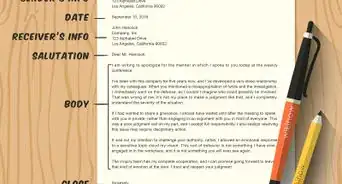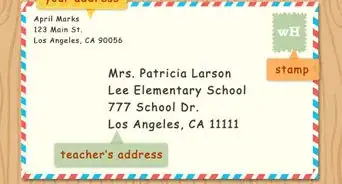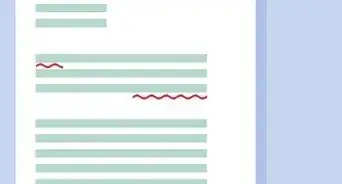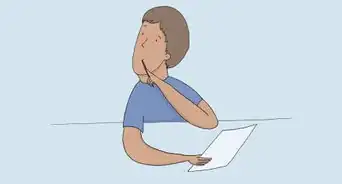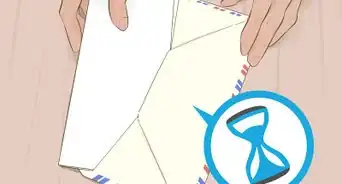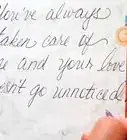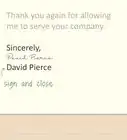This article was co-authored by Tami Claytor. Tami Claytor is an Etiquette Coach, Image Consultant, and the Owner of Always Appropriate Image and Etiquette Consulting in New York, New York. With over 20 years of experience, Tami specializes in teaching etiquette classes to individuals, students, companies, and community organizations. Tami has spent decades studying cultures through her extensive travels across five continents and has created cultural diversity workshops to promote social justice and cross-cultural awareness. She holds a BA in Economics with a concentration in International Relations from Clark University. Tami studied at the Ophelia DeVore School of Charm and the Fashion Institute of Technology, where she earned her Image Consultant Certification.
There are 12 references cited in this article, which can be found at the bottom of the page.
wikiHow marks an article as reader-approved once it receives enough positive feedback. In this case, several readers have written to tell us that this article was helpful to them, earning it our reader-approved status.
This article has been viewed 1,802,366 times.
Whether you're writing to someone who went out of their way for you or acknowledging that sweater grandma gave you for Christmas, people really appreciate thank-you letters. Being able to write polished and sincere letters of appreciation is not only a basic element of common courtesy and etiquette but an impactful way to make a positive impression. So, when someone helps you out, it's important to let them know that you appreciate their kindness.
Steps
Writing a Letter of Appreciation
-
1Don’t delay. Saying thank you to someone should happen soon after the event, gift, favor, or other action for which you're thankful.
-
2Use the appropriate letter format. When writing a formal letter, you should use a professional, typed format and print the letter on quality paper. When writing a more casual or personal letter to someone you know well, (clear and legibly) handwritten letters on quality stationery may be appreciated.[2]
- You can either set up the format yourself or use one of the letter templates built into your word processing application.
- If you’re setting up your own format for a formal letter, begin by entering the date in the top left-hand corner. Skip a line, then enter the full name and address of the person to whom you’re writing. Skip a line and enter your salutation.
- If you’re using your own format for a personal letter, it’s customary to include the date and, below it, a personalized yet polite greeting.
Advertisement -
3Enter the salutation. Letters to business associates or people you don't know well shouldinclude a title in the salutation.Letters to someone you already know well can be more personal, such as “Dear Jeff,” or “Dear Bridget.”[3]
- Doctors, professors, government officials, and military service members should all be addressed with their appropriate title spelled out in full, i.e. "Dear Doctor Johnson" or "Dear Sergeant Jones."
- If the person doesn’t have a more formal title, use the abbreviated "Mr." for men, and "Miss/Mrs./Ms" for women (be sure to know which title she prefers; if you don't know, you can opt for the more neutral “Ms.” or you can use her full name, like "Dear Jane Smith.”).
-
4State the reason for your letter. When writing a formal letter, it’s polite to begin byinforming the addressee of the reason you’re writing.[4] [5]
- If you’re writing a letter of appreciation, the purpose will likely be something like, “I’m writing to thank you for your kind donation to X Scholarship Fund (or sponsorship or recommendation, etc.). I was very excited to learn of your donation and would like to express my gratitude.”
-
5Go into a bit of detail about why you’re grateful and how their contribution will be put to use. This portion helps you communicate both yourgratitude and gives the recipient a sense of how their contribution will be used.For many people, knowing that their contribution will be put to good use is very reassuring and affirming.[6]
- Give a bit of information about yourself--who you are, your position, etc. Eg, “I’m the Director of the University Scholarship Fund and spearheaded our most current fundraising drive, with the goal of raising $50,000. I was delighted to receive your contribution”
- Describe how their contribution will be put to use and specify who or what it will benefit. Eg, “Your kind and generous donation will be used to establish a scholarship fund in your name, to benefit outstanding scholars in literary studies. The scholarship will award $1,000 annually to 3 students in need, selected for the quality of their work and dedication to the field. The scholarship money will help these students conduct a focused research project of their choosing, helping both further their academic careers and make valuable contributions to their field.”
-
6Conclude the letter. Close by reiterating your gratitude and belief that their contribution is valuable and important.[7]
- Reiterate your gratitude with something like, “Your donation will make a crucial difference in the career of the students who receive the scholarship, and I couldn’t be more grateful for your generosity.”
- Reiterate how valuable their contribution is by saying something like, “Your donation has allowed us to reach our fundraising goal and to continue our mission of supporting future scholars.”
-
7Sign off. Finally, you’ll need to formally sign off with a valediction (a parting salutation) and your signature.[8]
Help Ending Your Letter
Always hand-sign your name below the valediction!
In general, it’s standard etiquette to use “Sincerely” as your valediction if you’re writing a formal letter.
If you’re writing a very personal letter, you might use “Love,” but slightly less intimate options are “Yours Truly,” “Warm Regards,” “Fond Regards,” “Best Regards,” or “Respectfully.”[9]
If you’re writing a formal or professional letter, it’s common to include your name, typed in full, below your signature, in case your signature is difficult to read. -
8Proofread your letter. Before sending the letter, be sure you’ve carefully proofread it for typos and grammatical errors. A flawed letter will make a much less positive impression than a well-done one.[10]
- You may find it useful to read the letter aloud; sometimes reading aloud helps you catch errors you may miss by reading silently.
- Have a trusted friend or colleague review the letter.
- You may find it useful to
Writing a Thank-You Letter after a Job Interview
-
1Be prompt. Sending a thank-you letter after a job interview can make an excellent impression on a potential employer, provided you send it promptly after the interview--no later than three days is ideal.[11]
- Even if you don’t get the job or suspect you won’t get the job, sending a thank-you letter will leave a positive impression that can benefit you if you apply there or with an associate in the future.
-
2Choose an appropriate format. Because a letter of appreciation to a potential employer implies a professional relationship, choose and appropriately professional letter format.[12]
Formatting Tips for a Formal Letter
You can either set up the format yourself or use one of the letter templates built into your word processing application.You should use a professional, typed format and print the letter on quality paper. If you’re setting up your own format for a formal letter, begin by entering the date in the top left-hand corner. Skip a line, then enter the full name and address of the person to whom you’re writing.
Then skip a line before you enter your salutation.
-
3Enter the salutation. A professional thank-you should include a title in the salutation.[13]
Salutation Tips
If they have a title: Doctors, professors, government officials, and military service members should all be addressed with their appropriate title spelled out in full, i.e. "Dear Doctor Johnson" or "Dear Sergeant Jones."
If the person doesn’t have a title: Use the abbreviated "Mr." for men, and "Miss/Mrs./Ms" for women (be sure to know which title she prefers; if you don't know, you can opt for the more neutral “Ms.” or you can use her full name, like "Dear Jane Smith.”). -
4Open the letter by expressing your gratitude. To begin writing the body of your letter, start with a simple and concise expression of gratitude.[14]
- Something like, “Thank you for taking the time to meet with me on Monday. I greatly enjoyed our discussion.”
-
5Mention something specific about what you enjoyed. To show sincerity and that you aren’t simply using a general thank-you letter for every interviewer, include a specific detail about what you enjoyed during your conversation.[15]
- You might say something like, “I particularly enjoyed our discussion about the impact of social media outreach within non-profit organizations. Your insight about using technology to forge closer relations with clients made a strong impression on me.”
-
6Reference your hope for a continued relationship. As you close your letter, you can express a desire to talk or work with the recipient again in the near future.
- For example, you could write, “I hope we’ll have more opportunities to work together in the near future.”
-
7Add a line welcoming the recipient to contact you. It’s polite to conclude a post-interview thank-you letter with a sentence making yourself available for further contact.
- For example, “I will gladly provide any additional information you may need and welcome additional questions.”
-
8Add a valediction and your signature. Finally, choose an appropriate valediction (parting salutation) and sign your name to the bottom of the letter.[16]
- ”Sincerely” is the most common valediction for professional letters, but you may consider additional options like, “Warm Regards,” “Best Regards,” “Sincere Regards,” or “Respectfully.”[17]
- Hand-sign your name below the valediction.
- It’s customary to type out your full name below your signature in case your signature is difficult to read.
-
9Proofread your letter. Before sending the letter, be sure you’ve carefully proofread it for typos and grammatical errors. A flawed letter will make a much less positive impression than a well-done one.[18]
- You may find it useful to read the letter aloud; sometimes reading aloud helps you catch errors you may miss by reading silently.
- Have a trusted friend or colleague review the letter.
Sample Letters of Appreciation
Community Q&A
Did you know you can get answers researched by wikiHow Staff?
Unlock staff-researched answers by supporting wikiHow
-
QuestionHow do you write a thank you email?
 wikiHow Staff EditorThis answer was written by one of our trained team of researchers who validated it for accuracy and comprehensiveness.
wikiHow Staff EditorThis answer was written by one of our trained team of researchers who validated it for accuracy and comprehensiveness.
Staff Answer wikiHow Staff EditorStaff AnswerA thank you email is much the same as any other thank you letter, although the formatting is a little different. Include a brief, clear subject line (such as “Thank You!”) and keep your message sincere and concise. There’s no need to include your mailing address or your recipient’s mailing address at the top of the message, although you can include your address/other contact info in your signature.
wikiHow Staff EditorStaff AnswerA thank you email is much the same as any other thank you letter, although the formatting is a little different. Include a brief, clear subject line (such as “Thank You!”) and keep your message sincere and concise. There’s no need to include your mailing address or your recipient’s mailing address at the top of the message, although you can include your address/other contact info in your signature. -
QuestionHow do you write a letter of appreciation to an employee?
 wikiHow Staff EditorThis answer was written by one of our trained team of researchers who validated it for accuracy and comprehensiveness.
wikiHow Staff EditorThis answer was written by one of our trained team of researchers who validated it for accuracy and comprehensiveness.
Staff Answer wikiHow Staff EditorStaff AnswerKeep it sincere and specific. Let your employee know exactly what you are thanking them for and how it helped you or the company. For example, you might say, “Dear Sally, I would like to extend my thanks for your work on this month’s marketing campaign. Thanks to your efforts, our sales are up 15% from last month!” Depending on the culture of your company and your relationship with your employee, you can keep it formal or make the tone a little more casual and friendly.
wikiHow Staff EditorStaff AnswerKeep it sincere and specific. Let your employee know exactly what you are thanking them for and how it helped you or the company. For example, you might say, “Dear Sally, I would like to extend my thanks for your work on this month’s marketing campaign. Thanks to your efforts, our sales are up 15% from last month!” Depending on the culture of your company and your relationship with your employee, you can keep it formal or make the tone a little more casual and friendly. -
QuestionHow do you write a heartfelt appreciation letter?
 wikiHow Staff EditorThis answer was written by one of our trained team of researchers who validated it for accuracy and comprehensiveness.
wikiHow Staff EditorThis answer was written by one of our trained team of researchers who validated it for accuracy and comprehensiveness.
Staff Answer wikiHow Staff EditorStaff Answer
wikiHow Staff EditorStaff Answer
References
- ↑ Kate Spade, Manners, p. 62, (2004), ISBN 0-7432-5066-4
- ↑ https://www.indeed.com/career-advice/career-development/how-to-write-an-appreciation-letter-with-examples
- ↑ https://www.canr.msu.edu/news/gratitude_part_2_writing_a_gratitude_letter
- ↑ http://www.fresnostate.edu/studentaffairs/scholarships/faq/thankyouletter.html
- ↑ Tami Claytor. Etiquette Coach. Expert Interview. 29 September 2020.
- ↑ Tami Claytor. Etiquette Coach. Expert Interview. 29 September 2020.
- ↑ https://www.indeed.com/career-advice/career-development/how-to-write-an-appreciation-letter-with-examples
- ↑ https://www.grammarly.com/blog/appreciation-letter/
- ↑ http://www.artofmanliness.com/2008/10/23/the-art-of-thank-you-note-writing/
- ↑ https://writingcenter.unc.edu/tips-and-tools/editing-and-proofreading/
- ↑ https://www.indeed.com/career-advice/interviewing/sample-thank-you-letter-after-interview
- ↑ https://www.thebalancemoney.com/job-interview-thank-you-letter-examples-2063964
- ↑ https://www.indeed.com/career-advice/interviewing/sample-thank-you-letter-after-interview
- ↑ https://www.thebalancemoney.com/general-thank-you-letter-sample-2063961
- ↑ https://www.thebalancemoney.com/job-interview-thank-you-letter-examples-2063964
- ↑ https://www.thebalancemoney.com/general-thank-you-letter-sample-2063961
- ↑ http://www.artofmanliness.com/2008/10/23/the-art-of-thank-you-note-writing/
- ↑ https://writingcenter.unc.edu/tips-and-tools/editing-and-proofreading/
- ↑ http://www.whitesmoke.com/letter-of-appreciation
- ↑ http://www.whitesmoke.com/letter-of-appreciation
About This Article
Always try to write a letter of appreciation within 3 days of the event you’re thankful for so it seems more genuine and timely. Then, start with the date, recipient’s name and address, and salutation to introduce the letter. From there, move straight into thanking them for what they did, including as many specifics as you can remember so they know why you appreciate what they did. Close the letter be showing your gratitude again, and finish with the closing and hand-written signature. Keep reading to learn how to write a thank-you letter after a job interview!
